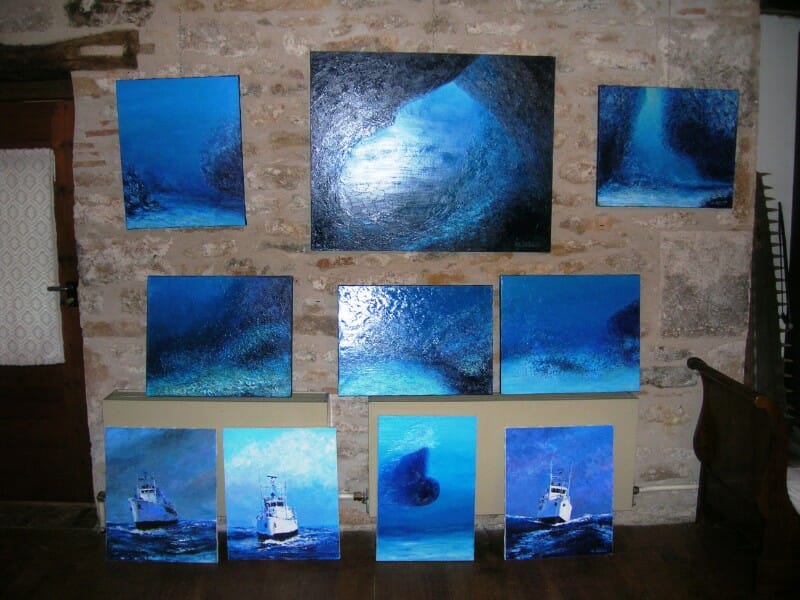Remembering André Laban, engineer of the diving saucer
By Franck Machu.
André Laban (October 19, 1928 – October 10, 2018), who died at the age of 90, is one of the key figures of the Cousteau team. Like Frederic Dumas or Albert Falco, he played a vital role. Sharp advice, lucid word, accomplice without a mask, he was one of Cousteau’s second in charge in years of intense creativity.
Embarking on Calypso
It all started in 1952, on the quarter-deck of the Calypso moored at the Old Port of Marseille to unload fresh amphorae from the ancient wreck of the Grand Cougloué. Cousteau is looking for an engineer to take over from Jean de Wouters. André Laban has just graduated as a chemical engineer. He is attracted to diving and the underwater universe unveiled by Cousteau in his first short films. ” What can you do? Cousteau asks him. “Nothing, he answers, but I know a little tinkering. Cousteau offers him a test of a week … a week that will last 20 years.
Laban was quickly assigned to the French Office of Submarine Research (OFRS) that Cousteau created in Marseille in 1953, and imagined as the civilian counterpart of the Navy. The first challenge is to design an underwater camera housing for a live broadcast in the year 1953.
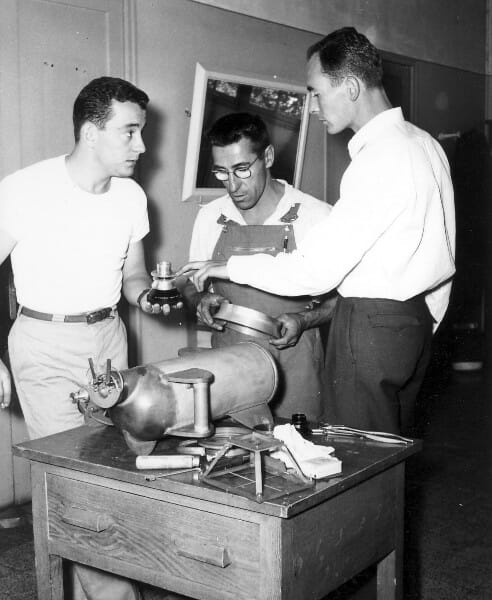
Conshelf 1 and Conshelf 2
In 1954, assisted by his two bright design partners, Claude Strada, and Armand Davso, Laban tackled the development of 35mm cinema camera boxes. He has the idea to design them in PVC, a material that was then all new, easy to weld and to transform. This is how the cameras of the ” Silent World” are born. The film is shot the following year with Louis Malle, co-director of Cousteau. Laban is one of the main protagonists. The film is a triumph. Palme d’Or at Cannes in 1956, Oscar for Best Documentary. It revolutionizes the vision of man toward the underwater world.
In 1956, André Laban became the Director of a OFRS which increased in number, and exceptional achievements followed one another: Troikas (underwater exploration sleds of great depth); in 1959 the diving saucer SP350 (first exploration submarine); in 1962 and 1963, the submarine houses of Conshelf 1 and Conshelf 2, then the camera boxes.
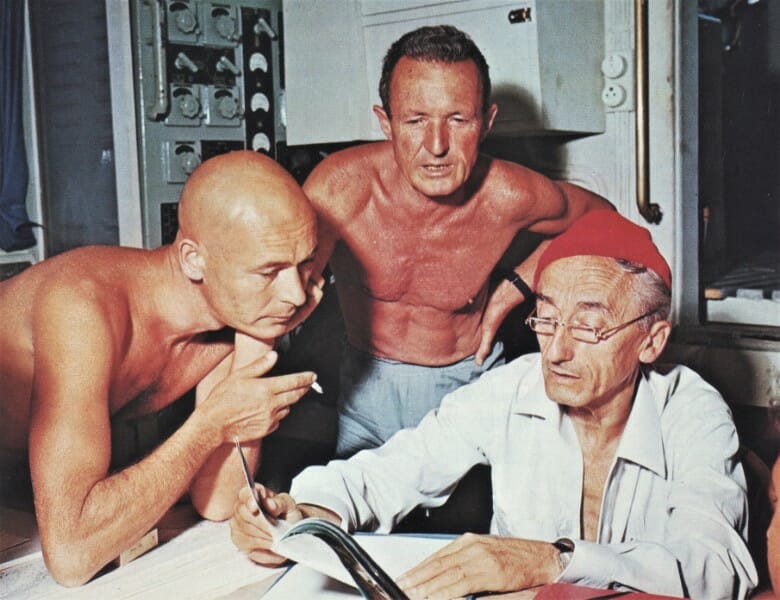
The underwater Odyssey of the Cousteau Team
In 1965, André Laban is the leader of the Conshelf 3 mission in Cap-Ferrat, a life experience in which 6 oceanauts live for a month at 100m depth in a habitable sphere. A flamboyant success and the summit of Laban’s collaboration with Cousteau.
In 1966, Laban relinquished his position as director of the OFRS to Roger Brenot and embarked on the Calypso for the underwater Odyssey of the Cousteau Team. A 3-year cruise around the world for the production of 12 television films. Laban is “Film Coordinator”. He directed several films in the series.
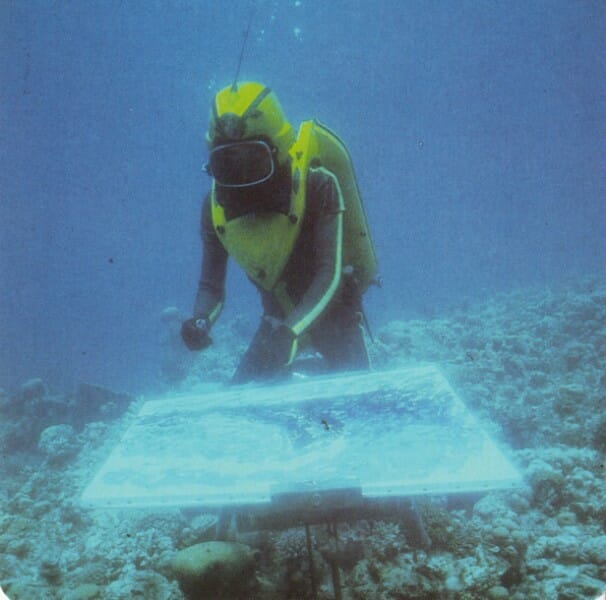
After the Cousteau Adventure, Laban the artist
In 1972, the financial difficulties of the OFRS, now called CEMA, forces Cousteau to close the CEMA and to dismiss a large part of its personnel. André Laban is one of them. It is a real shock for him who confided to having “entered Cousteauism as one returns to religion”.
But Laban is not only an engineer, but he is also an artist. Labanus, as his friends in Calypso called him, is an iconoclastic scholar with the appearance of an ageless kid, capable of producing an unprecedented synthesis of the most rigorous Cartesianism and the most unbridled creative fantasy. He is an excellent dilettante, in the noblest sense of the term: bohemian, painter, word player, musician.
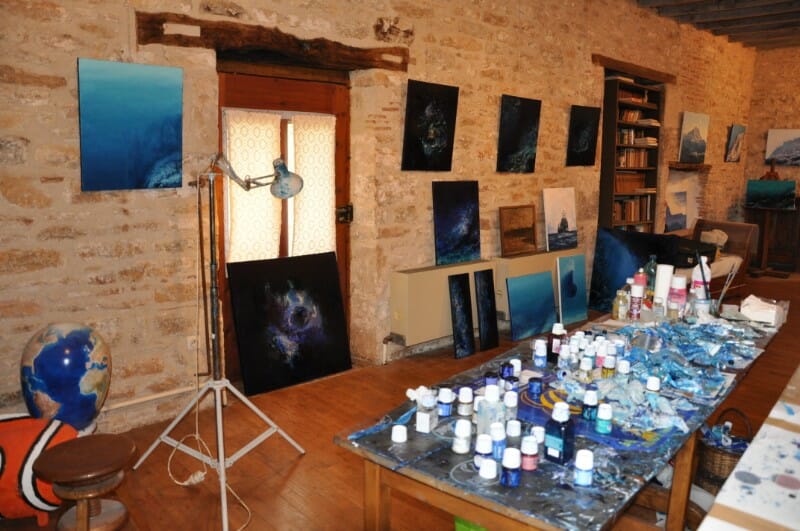
This dismissal opens his eyes. He realizes that he can exist by himself, flourish in all his singularity. In his house in Saint Antonin Noble Val, André Laban cultivates his many talents. He paints, imagines submarine films and realizes them, plays music, devotes himself to photography, publishes collections of drawings and writes humorous texts. He seems to have decided to twist the blow to the cliché of the exuberant and boastful Marseillais. A man of few words, he expresses himself by euphemism. This generous modest practices the verb as well as he handles the pencil, the brush or the tool. His “Dictionnaire des petits mots logiques” , published in 2010, published by La Brochure, is the result of the marriage of humor and erudition.
His films are nuggets of fantasy without dialogs or comments, in which the images are hooked on music and sound effects. “Iris and Oniris” is Palme d’Or at the Antibes World Underwater Image Festival in 1996. “Neptunia” (2007) wins a prize for humor in 2007.
His underwater paintings will remain his great work. Coveted by divers, while art lovers have not said their last word.
The Cousteau Society send their heartfelt condolences to her family and friends.
